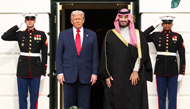Kristof: Lessons From the Virginia Shooting
▶ Nicholas D. Kristof
The horror isn’t just one macabre double-murder, but the unrelenting toll of gun violence that claims one life every 16 minutes on average in the United States. Three quick data points:
■ More Americans die in gun homicides and suicides every six months than have died in the last 25 years in every terrorist attack and the wars in Afghanistan and Iraq combined.
■ More Americans have died from guns in the United States since 1968 than on battlefields of all the wars in American history.
■ American children are 14 times as likely to die from guns as children in other developed countries, according to David Hemenway, a Harvard professor and author of an excellent book on firearm safety.
Bryce Williams, as the Virginia killer was known to viewers when he worked as a broadcaster, apparently obtained the gun used to murder his former co-workers Alison Parker and Adam Ward in response to the June massacre in a South Carolina church — an example of how gun violence begets gun violence. Williams may have been mentally disturbed, given that he videotaped Wednesday’s killings and then posted them on Facebook.
“I’ve been a human powder keg for a while … just waiting to go BOOM!!!!,” Williams reportedly wrote in a lengthy fax sent to ABC News after the killings.
Whether or not Williams was insane, our policies on guns are demented — not least in that we don’t even have universal background checks to keep weapons out of the hands of people waiting to go boom.
The lesson from the ongoing carnage is not that we need a modern prohibition (that would raise constitutional issues and be impossible politically), but that we should address gun deaths as a public health crisis. To protect the public, we regulate toys and mutual funds, ladders and swimming pools. Shouldn’t we regulate guns as seriously as we regulate toys?
The Occupational Safety and Health Administration has seven pages of regulations concerning ladders, which are involved in 300 deaths in America annually. Yet the federal government doesn’t make what I would call a serious effort to regulate guns, which are involved in the deaths of more than 33,000 people in America annually, according to the Centers for Disease Control and Prevention (that includes suicides, murders and accidents).
Gun proponents often say things to me like: What about cars? They kill, too, but we don’t try to ban them!
Cars are actually the best example of the public health approach that we should apply to guns. Over the decades, we have systematically taken steps to make cars safer: We adopted seatbelts and airbags, limited licenses for teenage drivers, cracked down on drunken driving and established roundabouts and better crosswalks, auto safety inspections and rules about texting while driving.
This approach has been stunningly successful. By my calculations, if we had the same auto fatality rate as in 1921, we would have 715,000 Americans dying annually from cars. We have reduced the fatality rate by more than 95 percent.
Yet in the case of firearms, the gun lobby (enabled by craven politicians) has for years tried to block even research on how to reduce gun deaths. The gun industry made a childproof gun back in the 19th century but today has ferociously resisted “smart guns.” If someone steals an iPhone, it requires a PIN; guns don’t.
We’re not going to eliminate gun deaths in America. But a serious effort might reduce gun deaths by, say, one-third, and that would be 11,000 lives saved a year.
The United States is an outlier, both in our lack of serious policies toward guns and in our mortality rates. Professor Hemenway calculates that the U.S. firearm homicide rate is seven times that of the next country in the rich world on the list, Canada, and 600 times higher than that of South Korea.
We need universal background checks with more rigorous screening, limits on gun purchases to one a month to reduce trafficking, safe storage requirements, serial number markings that are more difficult to obliterate, waiting periods to buy a handgun — and more research on what steps would actually save lives. If the federal government won’t act, states should lead.
Australia is a model. In 1996, after a mass shooting there, the country united behind tougher firearm restrictions. The Journal of Public Health Policy notes that the firearm suicide rate dropped by half in Australia over the next seven years, and the firearm homicide rate was almost halved.
Here in America, we can similarly move from passive horror to take steps to reduce the 92 lives claimed by gun violence in the United States daily. Surely we can regulate guns as seriously as we do cars, ladders and swimming pools.
스마터리빙
more [ 건강]
[ 건강]이제 혈관 건강도 챙기자!
[현대해운]우리 눈에 보이지 않기 때문에 혈관 건강을 챙기는 것은 결코 쉽지 않은데요. 여러분은 혈관 건강을 유지하기 위해 어떤 노력을 하시나요?
 [ 건강]
[ 건강]내 몸이 건강해지는 과일궁합
 [ 라이프]
[ 라이프]벌레야 물럿거라! 천연 해충제 만들기
 [ 건강]
[ 건강]혈압 낮추는데 좋은 식품
[현대해운]혈관 건강은 주로 노화가 진행되면서 지켜야 할 문제라고 인식되어 왔습니다. 최근 생활 패턴과 식생활의 변화로 혈관의 노화 진행이 빨라지고
사람·사람들
more
[인터뷰] 멕시코 오지에 세운 ‘희망 진료소’… “관심과 행동이 등불”
멕시코 바하 캘리포니아의 작은 마을 ‘푼타 코로넷(Punta Colonet)’. LA에서 차로 7~8시간 정도 달려야 닿는 이곳에 한인 내과의…

김영완 총영사 LV 방문
김영완 LA 총영사는 지난 11일부터 13일까지 라스베가스(LV)를 방문, 시장 및 주지사실 산하 경제개발청, UNLV 호텔경영대학 등과 잇따…
어흥축제 국악경연대회 해외 참가자 특별 무대
2025 어흥축제가 우천으로 오는 12월12일로 연기된 가운데 이번 축제의 일환으로 예정됐던 미주 국악경연대회의 해외 참가팀 특별무대 행사가 …
[올림픽 골프] 3개 남가주 매장에서 ‘원스톱 골…
올림픽 골프가 추수감사절을 맞아 대규모 골프 용품 세일을 진행한다. 이번 세일은 골프 클럽, 골프백, 의류, 액세서리 등 다양한 골프 관련 제…
[한스전자] 인기 가전제품 최대 2,000달러 할…
한스전자가 연말을 맞아 삼성, LG, 딤채, 프리지데어 등 인기 가전제품을 대상으로 최대 2,000달러 대규모 할인 행사를 진행한다. 이번 행…
많이 본 기사
- 한인 대형교회 전도사 113만불 횡령… 8
- 사우디 빈살만 “1조달러 투자”…7년… 1
- 2,000달러 관세 배당금… 내년에 … 1
- 아내 ‘냉동인간’ 만들더니 돌연 “혼자살기 적적해”…새 여친 맞은 남편 中서 논란
- 정용진, 빈살만 사우디 왕세자 美방문 환영행사 참석
- 관광비자 수수료 인상 185달러서 435달러로
- 트럼프, ‘7년만의 방미’ 사우디 빈살만에 오·만찬 ‘국빈급예우’
- 中, ‘日총리 발언 철회’ 요구에 日 거부… ‘주머니 손 中’ 영상도
- 한인 버스기사 살해범, 중범 불체자였… 1
- 조현병 나아졌다고 방치하면?… 5년 내 80% 재발 가능성 높아
- “첨단기술 노린 중국, 미국에 지난 24년간 2천억달러 대출”
- 한인타운 ‘우후죽순’ 노점상들 버몬트… 1
- 도요타, 미국 내 하이브리드車 생산 확대… “9억 달러 규모 투자”
- 대형유통점 홈디포 연간 실적전망 하향… “소비 경고음”
- 최현우, ‘13억’ 로또 1등 예언 적중에 고소당할 뻔..”당첨금 수령은 노코멘트”[돌싱포맨]
- 셧다운 기간인 10월 중순에도 실업지표 안정적
- 구글 피차이 “AI 버블 터지면 면역있을 회사 없어”
- 강경화 주미대사 “美와 긴밀소통해 韓… 1
- ‘강제추행 혐의’ 오영수, 대법원 간다..검찰 ‘무죄 판결’에 상고
- 클라우드플레어 장애…챗GPT·X 등 다수 한때 접속 안돼
- 구글, 차세대 AI ‘제미나이3’ 출시…검색창 전진배치해 정면승부
- 론스타와 ‘13년 국제소송전’ 마침표… ‘배상금 0원’ 완승
- ‘한채영 닮은꼴’ 28기 영숙 “반복되는 오해” 성형 시술 입 열었다
- ‘쯔양 협박’ 구제역, 수감 중 방송 은퇴 “피해자들에 죄송”
- 서예지, 가스라이팅→학폭 논란 후 복귀 준비 중..머리 산발에도 미소
- 오늘도 해결사! 이강인 환상 크로스→이태석 A매치 데뷔골 쾅! 한국, 가나에 1-0 신승 ‘포트2 보인다’
- 회장선거(뉴저지한인회) 놓고 내분사태… 1
- ‘수술→FA→48G 출전→또 FA’ 김하성, “1년 계약 가능성 높아” 새로운 시나리오 나왔다
- 김건희특검, 내일 ‘마지막 수사기간 연장’ 신청…내달 28일까지
- 애쉬번서 충전중인 배터리서 불…120만불 피해
- VA 페어팩스서 신종 ATM 절도범 설쳐
- ‘사의표명’ 정진우 중앙지검장 “논란 속에 직 내려놔 마음아파”
- 韓 대통령실 “UAE 150억불 방산… 1
- 우편요금 또 오른다 내년초 최고 7.… 1
- 오바마케어 대체 ‘트럼프케어’ 나오나
- 장학생 20명 선정…장학금 총 3만불
- “워싱턴교협 50년, 다음세대에 방향 제시하는 좌표”
- 갑상선암, 운동과 상관없다더니…10년만에 결과 뒤집혀
- 사자와 생쥐, 그리고 인간 이야기
- “75년 세대 잇는 이화의 대화합”
- ‘엡스타인 논란’에 입장 돌변 트럼프 “문건 전부 공개하자”
- OC 유일 대학 병원 ‘UCI 헬스’ 최고 수준 서비스
- H 마트, 2026년 탁상용 달력 무료 증정
- 사우디 빈살만 “1조달러 투자”…7년만의 방미환대 트럼프에 선물
- ‘네이버 플러스’호스피스 자원봉사자 31명 배출
- [LA 지역 샤핑 명소 10] 럭서리… 1
- 주택 가스누출 ‘폭발’ 치노힐스서 8명 부상
- LA 일대 나흘간 폭우 11월 최대 강수량 기록
- 대한은 다시 살아나는가
- LAX, 최대 공항 3위… 혼잡도 최악
1/5지식톡

-
 테슬라 자동차 시트커버 장착
0
테슬라 자동차 시트커버 장착
0테슬라 시트커버, 사놓고 아직 못 씌우셨죠?장착이 생각보다 쉽지 않습니다.20년 경력 전문가에게 맡기세요 — 깔끔하고 딱 맞게 장착해드립니다!장착비용:앞좌석: $40뒷좌석: $60앞·뒷좌석 …
-
 식당용 부탄가스
0
식당용 부탄가스
0식당용 부탄가스 홀세일 합니다 로스앤젤레스 다운타운 픽업 가능 안녕 하세요?강아지 & 고양이 모든 애완동물 / 반려동물 식품 & 모든 애완동물/반려동물 관련 제품들 전문적으로 홀세일/취급하는 회사 입니다 100% …
-
 ACSL 국제 컴퓨터 과학 대회, …
0
ACSL 국제 컴퓨터 과학 대회, …
0웹사이트 : www.eduspot.co.kr 카카오톡 상담하기 : https://pf.kakao.com/_BEQWxb블로그 : https://blog.naver.com/eduspotmain안녕하세요, 에듀스팟입니다…
-
 바디프렌드 안마의자 창고 리퍼브 세…
0
바디프렌드 안마의자 창고 리퍼브 세…
0거의 새제품급 리퍼브 안마의자 대방출 한다고 합니다!8월 23일(토)…24일(일) 단 이틀!특가 판매가Famille: $500 ~ $1,000Falcon: $1,500 ~ $2,500픽업 & 배송직접 픽업 가능LA…
-
 바디프렌드 안마의자 창고 리퍼브 세…
0
바디프렌드 안마의자 창고 리퍼브 세…
0거의 새제품급 리퍼브 안마의자 대방출 한다고 합니다!8월 23일(토)…24일(일) 단 이틀!특가 판매가Famille: $500 ~ $1,000Falcon: $1,500 ~ $2,500픽업 & 배송직접 픽업 가능LA…
케이타운 1번가
오피니언
 노세희 부국장대우·사회부장
노세희 부국장대우·사회부장 대한은 다시 살아나는가
 민경훈 논설위원
민경훈 논설위원사자와 생쥐, 그리고 인간 이야기
 한형석 사회부 부장대우
한형석 사회부 부장대우 한인타운 교통 인프라 개선 기대
 박영실 시인·수필가
박영실 시인·수필가 [화요칼럼] 말의 위력
 양홍주 / 한국일보 논설위원
양홍주 / 한국일보 논설위원 [지평선] 외국어 공부와 장수
 이상국
이상국 ‘도반(道伴)’
 옥세철 논설위원
옥세철 논설위원러시아제국 부활의 꿈은 멀어져만 가고…

폭발 직전의 상황인가?
 메건 매카들 워싱턴포스트 칼럼니스트 / CNN ‘GPS’ 호스트
메건 매카들 워싱턴포스트 칼럼니스트 / CNN ‘GPS’ 호스트 [메건 매카들 칼럼] 지나간 시대의 낙관주의
1/3지사별 뉴스

‘네이버 플러스’호스피스 자원봉사자 31명 배출
뉴저지 팰리세이즈팍에 위치한 비영리단체‘네이버 플러스’(Neighbor Plus·이사장 양춘길 목사)가 말기암 환자와 그 가족들을 돌보는 제4…
회장선거(뉴저지한인회) 놓고 내분사태 ‘악화일로’

“워싱턴교협 50년, 다음세대에 방향 제시하는 좌표”
“구슬이 서 말이라도 꿰어야 보배라는 말이 있다. 구슬을 꿰어 보배를 만들어 낸 편찬위원회에 감사하고, 지난 50년간 그 구슬을 만들어낸 여러…
장학생 20명 선정…장학금 총 3만불

사우디 빈살만 “1조달러 투자”…7년만의 방미환대 트럼프에 선물
사우디아라비아가 18일 대미 투자액을 기존에 발표했던 6천억 달러(약 876조원)에서 1조 달러(약 1천460조원) 규모로 상향 조정하기로 했…
방한후 美입국했다 석연찮게 구금된 한인과학자, 4개월만에 석방

오늘 하루 이 창 열지 않음 닫기 

















































.png)


댓글 안에 당신의 성숙함도 담아 주세요.
'오늘의 한마디'는 기사에 대하여 자신의 생각을 말하고 남의 생각을 들으며 서로 다양한 의견을 나누는 공간입니다. 그러나 간혹 불건전한 내용을 올리시는 분들이 계셔서 건전한 인터넷문화 정착을 위해 아래와 같은 운영원칙을 적용합니다.
자체 모니터링을 통해 아래에 해당하는 내용이 포함된 댓글이 발견되면 예고없이 삭제 조치를 하겠습니다.
불건전한 댓글을 올리거나, 이름에 비속어 및 상대방의 불쾌감을 주는 단어를 사용, 유명인 또는 특정 일반인을 사칭하는 경우 이용에 대한 차단 제재를 받을 수 있습니다. 차단될 경우, 일주일간 댓글을 달수 없게 됩니다.
명예훼손, 개인정보 유출, 욕설 등 법률에 위반되는 댓글은 관계 법령에 의거 민형사상 처벌을 받을 수 있으니 이용에 주의를 부탁드립니다.
Close
x